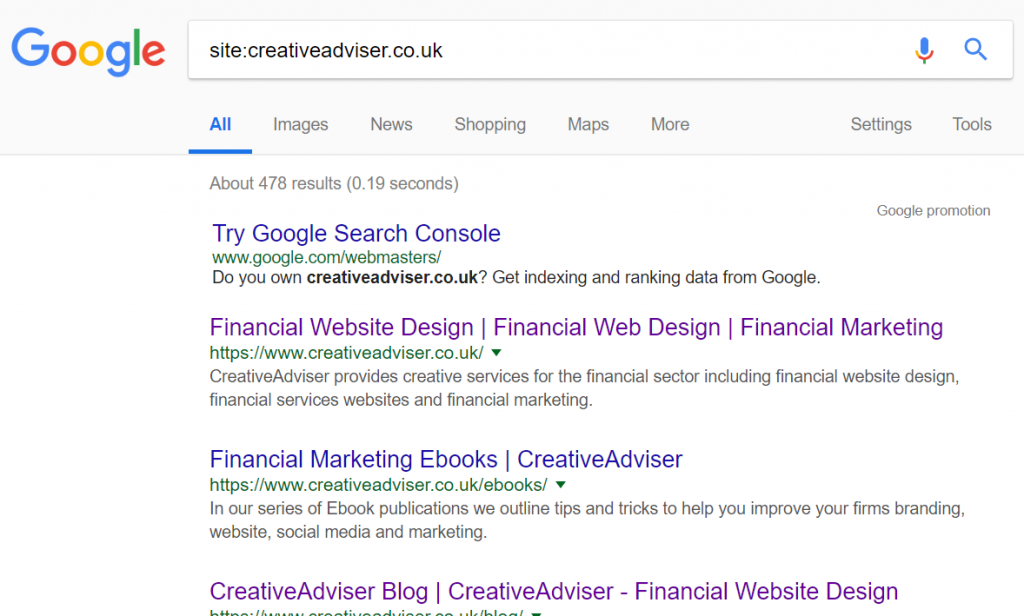
SEO is complex when marketing in any industry, let alone financial services. There are many moving parts involved with meeting search algorithms’ increasingly-more-sophisticated expectations.
Even seasoned financial SEO agencies continue to uncover new problems to solve for their clients, which require innovative thinking. How are IFAs and other financial firms supposed to stay on top of search, given the constantly evolving digital landscape around them?
In general, if there are easy-to-find, easy-to-fix SEO problems on your financial website which hold out the potential for high reward, the you should focus on addressing those first.
After all, fixing these is most likely to have the maximum positive effect on your search engine position, at the lowest resource cost and in the shortest amount of time. It is possible to uncover most of them in a day, giving you a quick list of SEO issues which will make a big difference if you fix them.
Here are some common SEO problems faced by financial websites, which fit the above profile:
#1 Indexation
Perhaps you’ve found yourself asking: “Why isn’t our financial website showing on Google when we type in our brand name?”
It’s a hugely important question. After all, for a financial adviser’s website to get any organic traffic, it absolutely needs to appear in Google.
Fortunately, answering this question is very easy. Simply go directly to Google, and type in “site:[your website URL]” to see how many of your web pages are appearing:
In the above example, we can see the web pages listed for CreativeAdviser in Google. At this point, it would be a good idea to ask ourselves:
- Are there any pages appearing that we do not want appearing?
- Are any pages missing, which we really want to rank?
- Is this the correct volume of pages, overall, displaying in the search results?
#2 Robots.txt
All it takes is for a “/” character to be placed incorrectly into your robots.txt file, and it can cause your SEO to come spiraling down.
To check your file, navigate to yoursite.com/robots.txt and be sure to check it does not contain the expression: “User-agent: * Disallow: /”
If you see this, then you need to immediately contact your web developer to fix it. Possibly, there is a good reason for the expression’s existence, but quite often it’s there due to an oversight.
#3 Canonical URLs
For most users of financial adviser’ websites, they do not care if your URL shows up as:
- www.ifawebsite.com
- ifawebsite.com
- ifawebsite/home.html
- ifawebsite.com/home.html
Yet Google and other search engines will care, so any marketing for financial services needs to carefully account for its URL configuration.
Google might, for instance, index a range of these URL versions (assuming your financial website has them). This can cause big SEO problems.
To fix this problem, the process is fortunately fairly straightforward:
- Type different variations of your homepage URL into the browser. Check whether they all direct to the same URL.
- Make sure you check the http and https versions of these variations as well.
- If these do not re-direct, then ask your developer to set up some 301 redirects to your preferred URL version.
#4 Rel=Canonical
This is similar to the previous point above, but it is a somewhat separate point. Which the above deals with resolving different versions of a URL, this point is about preventing page duplication.
This often occurs on financial websites with lots of similar content, often in areas featuring categories and filters (e.g. a news or blog section).
For instance, if your website has a page on financial planning, and another on financial planning services, you might want to consider canonicalising one of them. Especially if they say essentially the same thing, and have a similar layout and content.
#5 Broken Links
When a financial adviser approaches the launch of their new website, it’s incredibly important that your website designer has a firm grasp of SEO so you don’t end up with a ton of broken backlinks.
For instance, what can sometimes happen with inexperienced designers is they come up with a very different navigation structure from before. Sometimes, this can lead previously-top-ranking pages to be removed, causing a 404 error to any backlinks from other websites that have been pointing there.
You can use a tool like Google Search Console to check your backlinks for 404 errors like this. Once you’ve found and made a list of them:
- Set up 301 redirects to the most appropriate page
- Use Google Alerts to keep track of any broken backlinks which might pop up in the future.
- Establish a recurring site crawl, to double-check for any broken links.
#6 HTTPS
This is less optional in marketing for financial services. Google Chrome has already announced that it will be displaying non-HTTPS websites as “non-secure” in their browser, which – rightly or wrongly – will serve as a massive put-off to users.
It’s also very likely that Google is going to give HTTPS websites more of a boost to their SEO rankings, compared to non-HTTPS financial websites. So, here’s what you need to do:
- Check that your website is set up on an SSL certificate, by typing https://yourwebsite.co.uk into your internet browser. If still in doubt, ask your web developer.
- If you are on HTTPS, make sure any non-HTTPS versions of your pages are redirecting to the HTTPS versions (see Point 3 above about Canonical URLs).
- If you are not on HTTPS, enlist the services of a financial SEO agency to help you transition safely to an SSL certificate.
Conclusion
We don’t want to alarm you, but unless you are paying a dedicated financial SEO agency to regularly audit your website for the above, then chances are, your developer is not checking it all.
This post outlines just a handful of the many SEO issues you could quickly compile, and address to make a big difference to your search position. If you’d like to speak with us about implementing the above for your financial website, and taking appropriate further steps to get ahead of the competition, then we’d love to hear from you.






